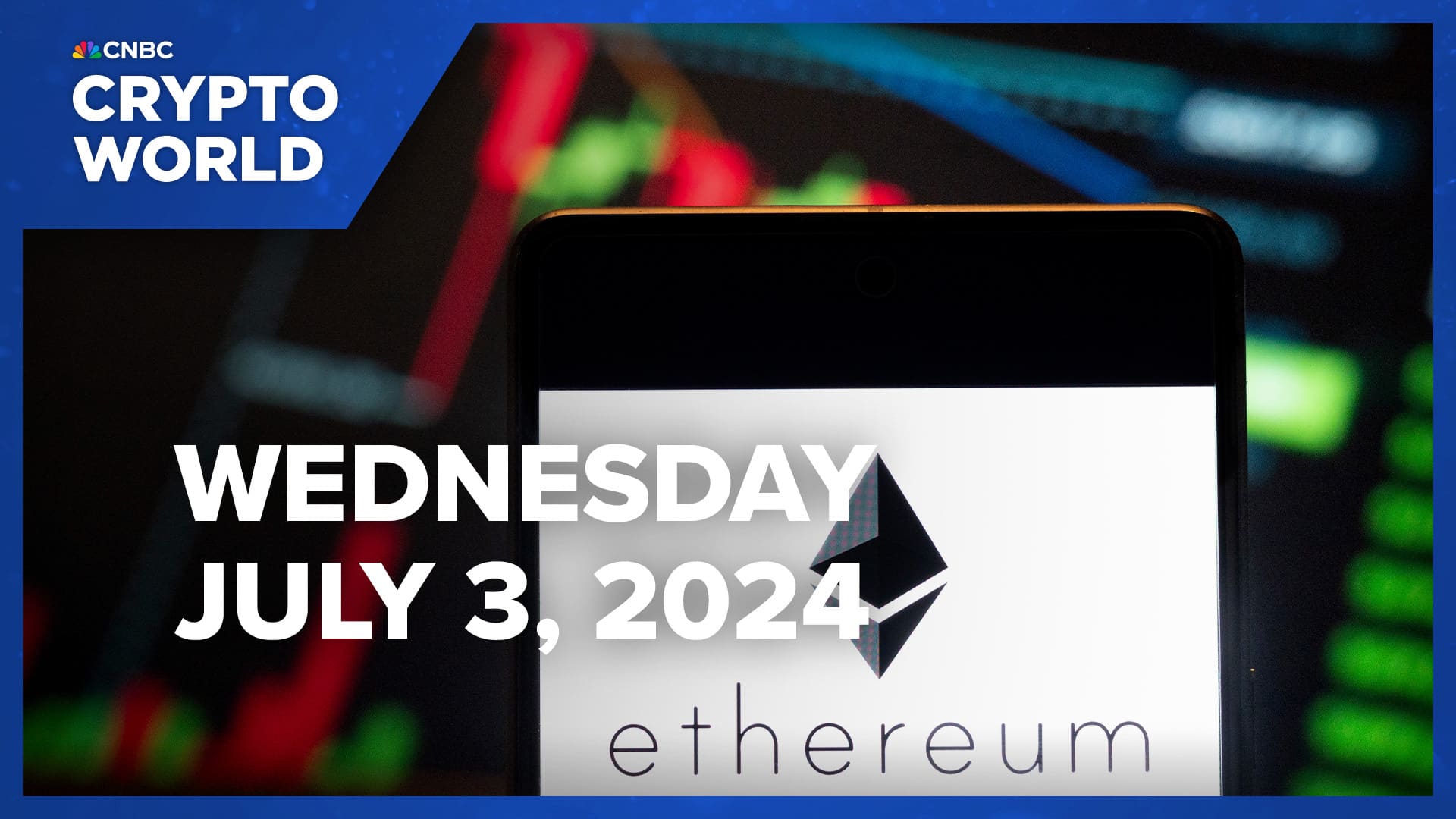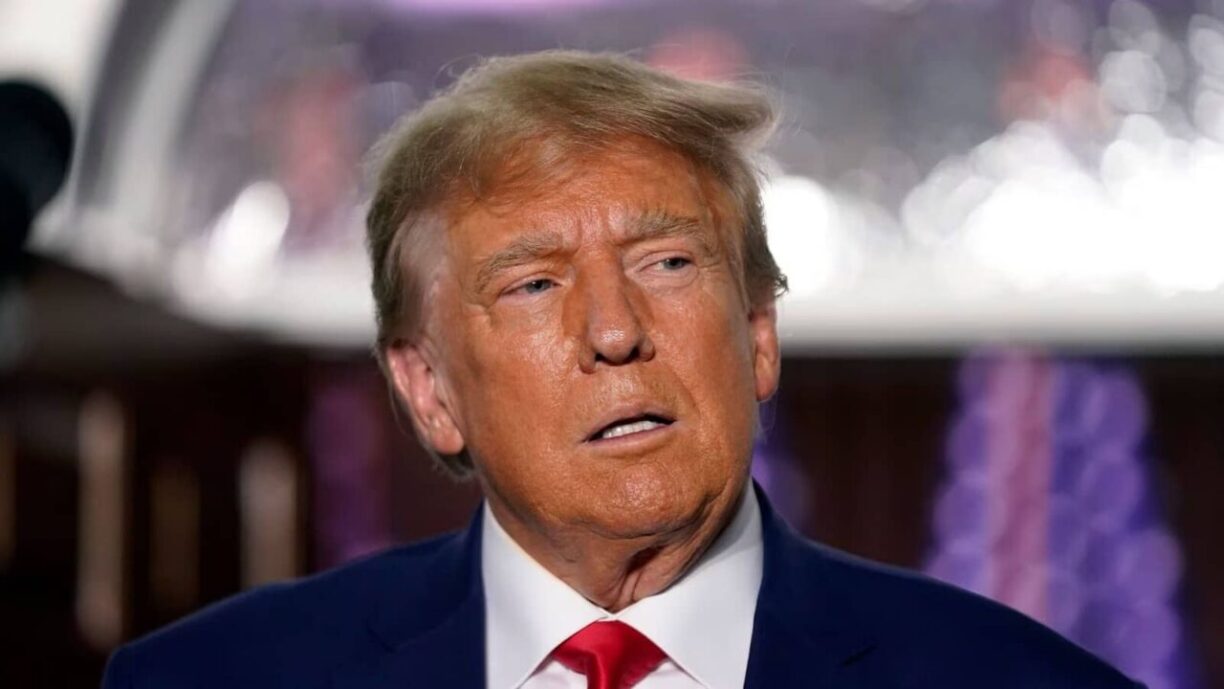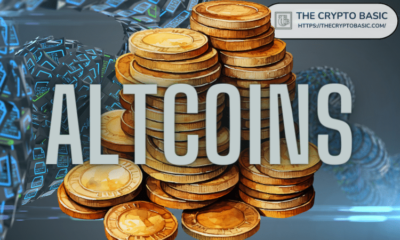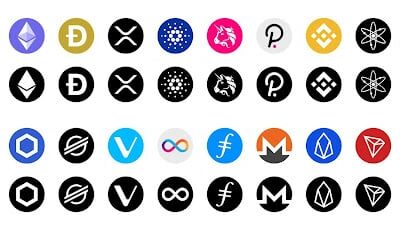News
Komodo CTO on the importance of deflationary tokenomics as an environmental strategy

In an interview with crypto.news, Kadan Stadelmann, CTO of Komodo, describes the need to integrate sustainable practices and deflationary mechanisms to advance the blockchain industry while addressing environmental concerns.
Blockchain technology is at a crossroads where demand for sustainable tokenomics and is growing environmental awareness is reshaping the industry. As the world grapples with climate change, blockchain projects are innovating minimize your ecological footprint.
Deflationary mechanisms, like token burn, are not just financial instruments but are part of a broader strategy to create a greener and more sustainable economic model. It helps manage token supply, creating scarcity and attracting investors who prioritize value and long-term sustainability.
The industry’s focus on token sustainability and efficiency is setting new standards.
Stadelmann believes that the future of blockchain technology depends on the adoption of sustainable and deflationary tokenomics.
Considering the rapid evolution of tokenomic models, especially with the rise of deflationary mechanisms, how do these models influence the long-term value of tokens and investor behavior in the blockchain sector?
Tokenomic models, particularly those that incorporate deflationary mechanisms, have been influential in creating long-term value for cryptocurrency investors. On the other hand, projects that have inflationary tokenomics often create an environment that favors the creators or large holders of the cryptocurrency. Smaller holders, or people just discovering cryptocurrency, are at a disadvantage as they usually fail to accumulate enough supply to influence the market value. Furthermore, for centuries, we have seen the long-term negative effects of fiat currency inflation and hyperinflation in the global economy. Deflationary mechanisms such as block reward reduction (e.g. BTC) or token consumption (e.g. BNB) have historically led to an increase in the market value of cryptocurrencies.
Is Komodo making any moves in this regard?
Recently, the Komodo community has approved three proposals, two of which will lead directly to a more deflationary tokenomic model for KMD. These include KIP0002 (burning 100% of transaction fees and KIP0003 (reducing block reward from 3 KMD to 1 KMD). The other approved proposal – KIP0004 – will transition the Komodo blockchain from Proof of Work (PoW) to Proof of Stake (PoS) ) in 2025 or 2026 (exact date to be defined).
In terms of scalability and operational efficiency, what advantages does the model that supports independent blockchains for each project offer compared to traditional single-chain platforms?
The most important benefit of supporting a multi-chain model, rather than a single-chain model, is the autonomy of crypto projects to shape their own tokenomics. Projects that are based on Ethereum, for example, do not have the ability to reduce the underlying transaction fees (gas) on each transaction. Users must also hold ETH to pay for gas, even if their transaction does not otherwise involve ETH (e.g. exchanging one ERC-20 token for another ERC-20 token on a DEX). For cryptocurrencies that use their own blockchains, there is no need to charge a gas fee or rely on a secondary cryptocurrency. Projects can also set a minimum amount on transaction fees. Scalability is another factor. Since each cryptocurrency has its own blockchain, transaction completion times are generally much shorter due to less mempool congestion. Transaction fees are also typically much more consistent and cheaper.
What architectural innovations are currently leading the way in minimizing environmental impacts in the blockchain development industry? How do these technologies balance scalability with energy efficiency?
From the point of view of environmental sustainability, the biggest innovation is Proof of Stake. As we saw in September 2022, Ethereum’s move to Proof of Stake (PoS) reduced energy consumption by approximately 99.5% compared to Proof of Work (PoW). As a result, the network has also become more scalable. If we look at other PoS-based blockchains, on average they have a much higher transaction per second (TPS) limit than PoW-based blockchains. Another important aspect to consider is that PoS cryptocurrencies make it much easier for average, non-technical users to actively participate in network security and earn block rewards. This leads to higher participation among HODLers and creates a greater incentive to hold for a longer period of time than to sell during adverse market conditions.
How do deflationary strategies like token burning shape market dynamics and token valuation over time in the broader blockchain ecosystem?
It’s simple economics, or tokenomics in this case. In some cases, deflationary strategies such as token burn can contribute to price stability or mitigate downward pressure on prices. By reducing the supply of tokens, these mechanisms help counteract inflationary pressures that could otherwise devalue the token over time. This stability can boost investor confidence and attract more long-term investment. If demand for a specific cryptocurrency remains at least the same or increases over time, deflationary tokenomics should theoretically lead to an increase in prices.
What are the key architectural choices that can help blockchain platforms maintain high throughput and efficiency without compromising security or increasing costs?
There are several potential choices that can help crypto projects achieve high throughput and efficiency. While Proof of Work (PoW) often offers high-level security (especially for large blockchains like Bitcoin), it can be resource-intensive and limit throughput. Proof of Stake (PoS) and variants such as Delegation Proof of Stake (DPoS) offer higher throughput with lower resource requirements but require careful design to ensure security. Scaling solutions such as state channels (e.g. Lightning Network) or sidechains can enable off-chain transaction processing, reducing the load on the main blockchain and increasing throughput. However, they require careful integration with the main chain to maintain security and interoperability.
How crucial is it for blockchain platforms to keep transaction fees low?
The reality is that developers are more likely to rely on a blockchain that allows for cheaper transactions. As a result, users are also more likely to start using various dApps if they are convenient. Blockchains should allow developers to easily design smart contracts that minimize computational complexity and gas consumption. This is possible through techniques such as code optimization, gas-efficient data structures, and off-chain computing. Additionally, dApp developers should consider using pre-compiled contracts for computationally expensive operations.
From an industry-wide perspective, when designing blockchain solutions with a focus on environmental sustainability, what are some of the key considerations that developers should prioritize to ensure their platforms are efficient and have minimal impact?
As stated above, the simplest method is to use PoS. However, if PoW is necessary, consider implementing energy-efficient mining algorithms or variations that reduce computational workload and power consumption. Examples include Equihash (used in Zcash) or Ethash (formerly used in Ethereum). Operating nodes or mining farms prioritize energy-efficient hardware and data center practices. This includes using renewable energy sources and optimizing cooling systems to reduce energy waste. Another solution is to optimize the blockchain protocol and architecture for efficiency. This includes reducing block sizes, optimizing data storage and retrieval, and minimizing unnecessary computations. Efficient data structures and compression techniques can also help reduce your overall energy footprint.
News
How Ether Spot ETF Approval Could Impact Crypto Prices: CNBC Crypto World

ShareShare article via FacebookShare article via TwitterShare article via LinkedInShare article via email
CNBC Crypto World features the latest news and daily trading updates from the digital currency markets and gives viewers a glimpse of what’s to come with high-profile interviews, explainers and unique stories from the ever-changing cryptocurrency industry. On today’s show, Ledn Chief Investment Officer John Glover weighs in on what’s driving cryptocurrency prices right now and how the potential approval of spot ether ETFs could impact markets.
News
Miners’ ‘Capitulation’ Signals Bitcoin Price May Have Bottomed Out: CryptoQuant

According to CryptoQuant, blockchain data shows signs that the Bitcoin mining industry is “capitulating,” a likely precursor to Bitcoin hitting a local price bottom before reaching new highs.
CryptoQuant analyzed metrics for miners, who are responsible for securing the Bitcoin network in exchange for newly minted BTC. As outlined in the market intelligence platform’s Wednesday report, multiple signs of capitulation have emerged over the past month, during which Bitcoin’s price has fallen 13% from $68,791 to $59,603.
One such sign includes a significant drop in Bitcoin’s hash rate, the total computing power that backs Bitcoin. After hitting a record high of 623 exashashes per second (EH/s) on April 27, the hash rate has fallen 7.7% to 576 EH/s, its lowest level in four months.
“Historically, extreme hash rate drawdowns have been associated with price bottoms,” CryptoQuant wrote. In particular, the 7.7% drawdown is reminiscent of an equivalent hash rate drawdown in December 2022, when Bitcoin’s price bottomed at $16,000 before rallying over 300% over the next 15 months.
This latest hash rate drop follows Bitcoin’s fourth cyclical “halving” event in April, which cut the number of coins paid out to miners in half. According to CryptoQuant’s Miner Profit/Loss Sustainability Indicator, this has left miners “mostly extremely underpaid” since April 20, forcing many to shut down mining machines that have now become unprofitable.
CrypotoQuant said that miners faced a 63% drop in daily revenue after the halving, when both Bitcoin block rewards and transaction fee revenues were much higher.
During this time, Bitcoin miners were seen moving coins from their on-chain wallets at a faster rate than usual, indicating that they may be selling their BTC reserves“Daily miner outflows reached their highest volume since May 21,” the company wrote.
Among the sales of Bitcoin miners, whales and national governmentsBitcoin’s price drop in June also hurt Bitcoin’s “hash price,” a metric of Bitcoin Miner Profitability per unit of computing power.
“Average mining revenue per hash (hash price) continues to hover near all-time lows,” CryptoQuant wrote. “Hashprice stands at $0.049 per EH/s, just above the all-time low hashprice of $0.045 reached on May 1st.”
By Ryan-Ozawa.
News
US Congressman French Hill Doubles Down on Trump’s Pro-Crypto Stance

US lawmaker French Hill has noted that Donald Trump will take a more pro-crypto approach than the current administration. The run-up to the presidential election has seen cryptocurrencies become an issue with lawmakers making huge statements ahead of the polls. Donald Trump has also been reaching out to the industry, making a pro-crypto case.
French Hill Backs Trump’s Pro-Crypto Stance
Republican Congressman French Hill has explained the type of cryptocurrency regulatory framework he believes Donald Trump could adopt in the country. In a recent interview with CNBC, French Hill said that the recently passed FIT21 bill is the type of regulatory framework the Trump administration will adopt in the sector.
#FIT21 passed the House with 71 Democratic votes, it’s exactly the kind of digital asset regulatory framework former President Trump would support if re-elected.
See more on @SquawkCNBC
photo.twitter.com/ceTmU4LApU
— French Hill (@RepFrenchHill) July 3, 2024
THE FIT21 Bill It is intended to protect investors and consumers in the market by establishing clear rules and powers for the various regulators in the sector. According to Hill, Trump will adopt it because it directs the Securities and Exchange Commission (SEC) and the Commodity Futures Trading Commission (CFTC) on the specific regulatory framework needed in the market.
“… for people who are innovating and starting a crypto token, a related business, custody of those assets, how to ensure consumer protection, so I think that framework is the right approach and that’s what I’m going to recommend to the President to pass, which is that we have not passed it between now and the end of this Congress.”
He also called Trump an innovative and pro-growth president in financial matters.
Cryptocurrency is going mainstream
This election cycle saw the cryptocurrency industry taking a place in mainstream issues following broader adoption across demographics. From candidates moving toward enthusiasts to recent pro-Congress legislation, cryptocurrencies have become a rallying point for officials. The U.S. regulatory landscape has been criticized for stifling growth due to frequent SEC LawsuitsThis has led executives to push for pro-cryptocurrency laws and raise money for pro-industry candidates.
Read also: Federal Reserve Predicts “AI Will Be Deflationary” to Stimulate Economy
David is a financial news contributor with 4 years of experience in Blockchain and cryptocurrency. He is interested in learning about emerging technologies and has an eye for breaking news. Keeping up to date with trends, David has written in several niches including regulation, partnerships, cryptocurrency, stocks, NFTs, etc. Away from the financial markets, David enjoys cycling and horseback riding.
News
US Court Orders Sam Ikkurty to Pay $84 Million for Cryptocurrency Ponzi Scheme

A federal court has ordered Jafia LLC and its owner, Sam Ikkurty, to pay nearly $84 million to cryptocurrency investors after ruling that the company was operating a Ponzi scheme.
The ruling, issued by Judge Mary Rowland in the U.S. District Court for the Northern District of Illinois, follows a lawsuit filed by the Commodity Futures Trading Commission (CFTC) in 2022 after the fund collapsed.
Judge Rowland found that Ikkurty, based in Portland, Oregon, did numerous false claims on his company’s hedge funds.
These included misleading statements about his trading experience and the promise of high and stable profits. Instead, Ikkurty used funds from new investors to pay off previous investors, a hallmark of a Ponzi scheme.
The Ponzi Scheme
The court found that Ikkurty misappropriated investment funds for personal use without the knowledge of the investors. These funds were used for personal use and were reported as Fraudulent Investmentscausing significant financial losses to customers.
This non-transparent operation violated Transparency Commission regulations, which led to the imposition of a hefty fine to compensate defrauded investors and restore some public confidence in the financial system.
Judge Rowland emphasized that fraudulent activity such as this violates the law and undermines the integrity of modern financial markets. The $84 million award seeks to address the financial harm inflicted on investors and reinforce the importance of legal compliance in cryptocurrency trading.
-

 News11 months ago
News11 months agoCryptocurrency exchanges Binance and KuCoin register with India’s financial intelligence unit as cryptocurrency credibility improves
-

 News9 months ago
News9 months agoMiners’ ‘Capitulation’ Signals Bitcoin Price May Have Bottomed Out: CryptoQuant
-

 Videos11 months ago
Videos11 months agoBitcoin Price AFTER Halving REVEALED! What’s next?
-

 Altcoin8 months ago
Altcoin8 months agoOn-chain data confirms whales are preparing for altcoin surge with increased buy orders
-

 Bitcoin9 months ago
Bitcoin9 months agoBitcoin (BTC), Stocks Bleed as China’s Surprise Rate Cut Signals Panic, Treasury Yield Curve Steepens
-

 Bitcoin11 months ago
Bitcoin11 months agoBitcoin Could Test Record Highs Next Week in ETF Flows, Says Analyst; Coinbase appears in the update
-

 Videos11 months ago
Videos11 months agoBlackRock Will Send Bitcoin to $116,000 in the Next 51 Days (XRP News)
-

 Videos11 months ago
Videos11 months agoAre cryptocurrencies in trouble? Bitcoin Insider Reveals “What’s Next?”
-

 Videos11 months ago
Videos11 months agoCryptocurrency Crash Caused by THIS…
-

 Videos11 months ago
Videos11 months agoBREAKING NEWS: The 19 best cryptocurrencies ready to skyrocket!
-

 Videos11 months ago
Videos11 months agoThe REAL reason why cryptocurrency is going up!
-

 Altcoin11 months ago
Altcoin11 months agoThe best Altcoins to buy before they rise





